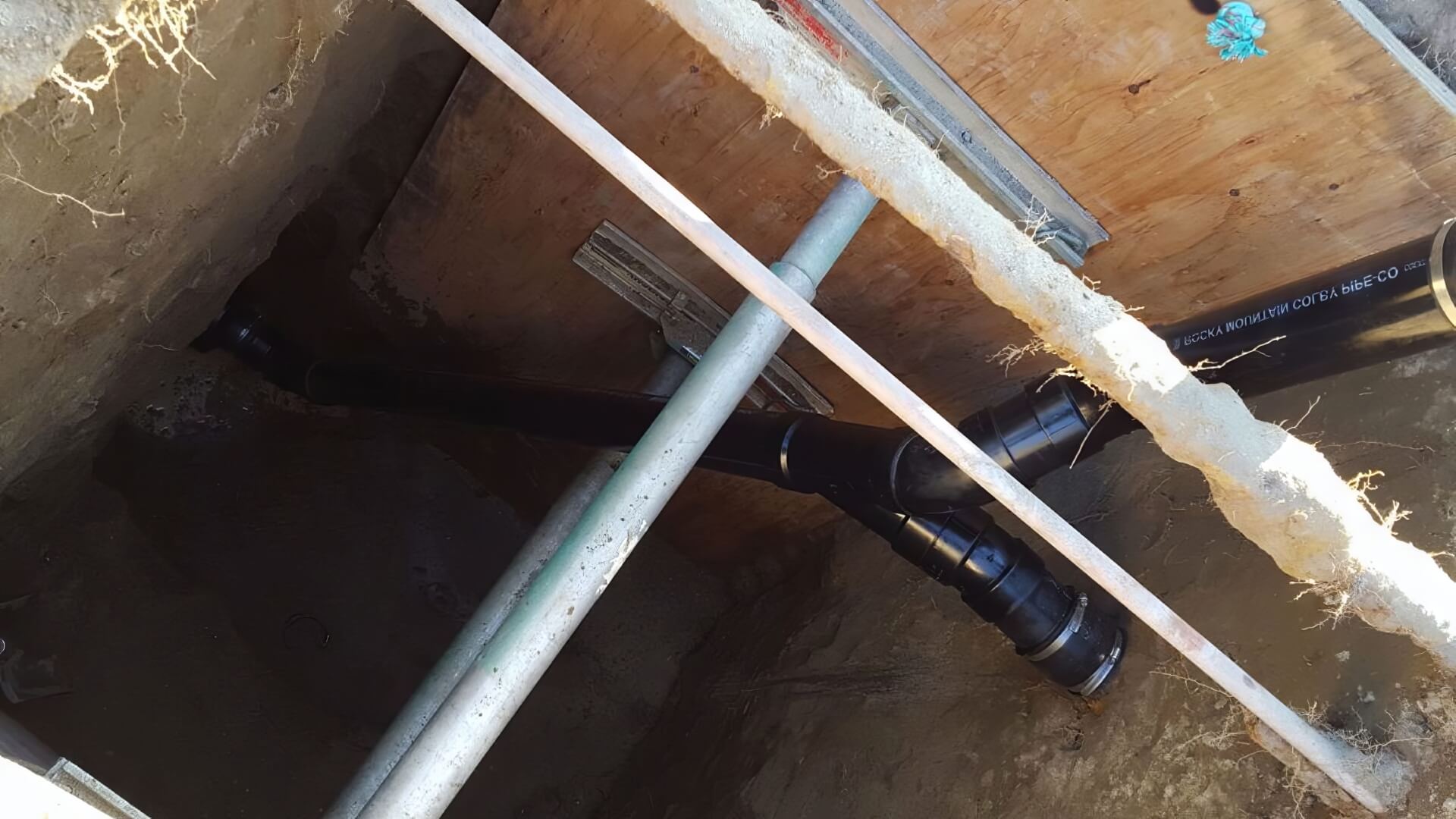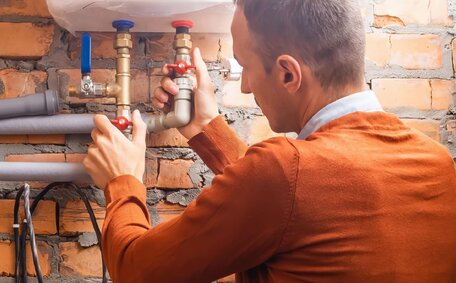Introduction to Relighting Your Gas Water Heater’s Pilot Light
Knowing how relight your water heater’s pilot light is essential for maintaining continuous hot water availability in any household. However, it’s common for the pilot light in gas water heaters to inadvertently go out, leaving you without this necessity.
As licenced plumbers based in Ryde, Sydney, we at Ryde Plumbing want to provide you with step-by-step instructions on safely relighting your gas water heater’s pilot so you can avoid unnecessary service calls and quickly restore hot water when this happens.
In this guide we’ll cover how to identify if your pilot light is out, locate the pilot assembly, use the gas control valve to safely dissipate any built-up gas, light the pilot flame, and troubleshoot issues if it doesn’t stay lit after several attempts. While we aim for these instructions to allow you to DIY relighting the pilot, if at any time you smell gas or feel unsafe doing so, contact Ryde Plumbing immediately to schedule professional assistance.
We’ll also emphasise critical safety precautions like smelling for gas leaks before proceeding.
Safety Precautions Before Attempting to Relight the Pilot
When aiming to relight pilot flames on your water heater, safety should be your top priority. Before proceeding, take these precautions:
- Carefully check the area around your water heater for the smell of gas leaks. Do this by getting near floor level and sniffing. If you detect any gas, exit the area immediately and contact a gas fitter.
- Ensure there are no sources of ignition like flames, heaters or flashlights, or any flammable materials stored nearby.
- Wait 5 full minutes upon smelling gas to allow it to dissipate before lighting the pilot. Set a timer rather than estimating.
- Consult your owner’s manual to understand your unit and for specific relighting instructions.
- Have safety glasses, a long barbecue lighter or igniter button ready based on your pilot ignition type.
Following these guidelines means you can safely attempt relighting your pilot. If you ever feel unsafe, exit the area and call a professional.
Identifying a Burned-Out Pilot Light
Before attempting to relight your pilot, you’ll want to confirm that it has gone out. There are a couple key indicators of a pilot light being out:
- Absence of a steady blue pilot flame inside the access panel of your water heater.
- A red or blinking indicator light on the outside of your unit, often marked ‘Pilot’ or ‘Pilot Out’.
Carefully check both the actual pilot assembly inside the access panel and any external indicator lights. However if you do see the pilot flame, your issue likely lies elsewhere - contact Ryde Plumbing to troubleshoot.
If you don’t see a blue pilot flame and the indicator warns pilot is out, proceed to the next steps for relighting it.
Locating the Pilot Light and Gas Control Valve
To locate your pilot light and gas control valve, start by opening the access panel of your gas water heater, often found near the bottom. Consult your owner’s manual, as each unit can vary. Inside you’ll likely see a diagram, sticker or writing indicating the pilot light assembly location.
The pilot will be a small tube ending in an open flame. Nearby you should locate the gas control valve, which manages gas flow to the pilot and burner. This resembles a spigot and is controlled manually via knobs or digitally on electronic ignitions.
While the position differs across water heater models, the pilot and valve are typically situated close together. Ensure you’ve identified both before proceeding with lighting instructions. If you cannot locate them, call Ryde Plumbing to avoid unsafe handling.
Steps to Relight the Pilot Light
The process of relighting your pilot will be similar across most gas water heater brands and models. The key differences lie with manual knob controlled versus electronic push button ignitions. Follow the steps below based on your system:
Manual Gas Control Valve
- Turn the gas control valve clockwise to the ‘off’ position marked with an * to cut off the gas supply.
- Open the access panel and smell for gas leaks. If any scent is detected, exit immediately and call Ryde Plumbing.
- Set a 5 minute timer and wait for any built up gas to dissipate.
- Facing away from the pilot, use a long barbecue lighter to light your pilot while pressing the gas control knob inward.
- Continue holding the knob down for 30-60 seconds as you light pilot to allow gas flow until the flame remains steadily lit when released.
- If the flame goes out upon release, repeat steps 3-5 up to 3 times until the blue pilot flame stays lit.
- Turn the gas control knob counter clockwise to ‘on’ once the pilot holds.
Electronic Ignition
- Rotate the gas control switch to the ‘off’ position.
- Open the panel, check for gas leaks and allow 5 minutes to dissipate as needed.
- Push the igniter button continuously for up to 90 seconds until pilot lights.
- If unsuccessful after 3 attempts, follow your manual troubleshooting before trying again.
- Once lit, release the igniter button and turn the gas control to ‘on’.
If you cannot get the pilot to remain lit after following these instructions, contact Ryde Plumbing immediately for professional assistance to avoid risks.
Troubleshooting: When the Pilot Light Won’t Stay Lit
If after multiple attempts your newly lit pilot flame continues to go out, there are a few key troubleshooting tips to try:
- Ensure the thermocouple or flame sensor is properly aligned in the pilot assembly flame.
- Check for obstructions or kinks in the gas supply line that could be limiting flow.
- Inspect if the pilot orifice or hood are blocked from debris or dirt buildup.
- See if the gas metre, regulator or manual gas control valve are functioning properly.
- Test that electronic igniters are sparking and piezo igniters clicking properly.
Failing these basic troubleshooting steps, underlying issues like a faulty thermocouple, corroded piping, or metre malfunction may be to blame. Continuing to attempt to relight your pilot in these instances risks further system damage or dangerous gas leaks.
For persistent pilot light issues or if you ever smell gas, immediately turn off the gas line cut-off valve and hot water system then call Ryde Plumbing to schedule professional repair assistance. Avoid taking unnecessary risks - it’s better to call in the experts.
Determining Manual vs. Electronic Ignition Systems
Gas water heaters feature either manual knob controlled or electronic push button ignition systems to relight the pilot. Determine which system you have in a few quick steps:
- Check your owner’s manual - the pilot lighting instructions will specify manual or electronic.
- Look for a physical knob gas valve you twist versus a digital display with buttons.
- See if there is a dedicated igniter/sparker button on the gas valve or control panel.
- Inspect for a piezo ignition, which clicks to create a spark to manually light.
If still uncertain which system you have, call Ryde Plumbing and we can identify over the phone or schedule a visit. Correctly determining the ignition type is crucial for following the proper pilot lighting instructions.
When to Call a Professional Technician
While the instructions provided aim to allow you to safely DIY relighting your pilot light, certain situations warrant calling in a professional from Ryde Plumbing for assistance:
- The pilot flame repeatedly goes out after following all troubleshooting tips.
- You smell gas at any point or feel unsafe attempting the process.
- The pilot won’t spark or light after several attempts on an electronic ignition.
- You’re unable to locate the pilot light or gas valve access panel.
- There are visible signs of corrosion, damage or leaks.
If you encounter any of the above, call 1300 349 338 or email [email protected] to schedule a prompt appointment.
We provide 24/7 emergency plumbing assistance when pilot problems put your comfort or safety at risk. Our team of licenced technicians have extensive training to address pilot lighting issues while prioritising your safety.
Entrust the experts at Ryde Plumbing to get your hot water restored quickly and safely. Our upfront quotes ensure no surprises, and we stand behind quality workmanship you can rely on.
Maintaining Your Water Heater for Safety and Longevity
Proper maintenance is key for water heater safety and longevity. We recommend inspecting your unit annually and following the manufacturer’s maintenance guidelines.
Routinely check that gas lines and fittings are leak-free, the pilot assembly is clean, the thermocouple properly aligned, and components like the gas valve operating smoothly. Clear any dirt, soot or debris buildup from around the pilot hood, burner assembly and exhaust flue.
Schedule professional preventative maintenance every 3-5 years in hard water areas to prevent mineral scale accumulation and corrosion issues over time. Technicians can also assess and address problems early.
At Ryde Plumbing our licenced gas fitters undergo continual training to service all brands. Contact us to inquire about maintenance service pricing so you can optimise safety and functioning.






